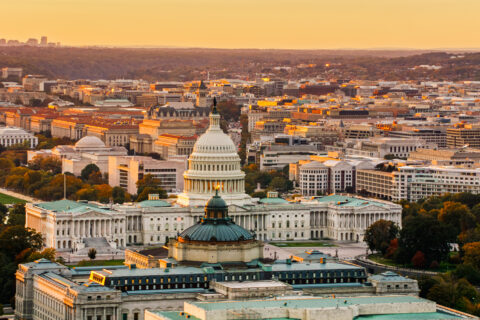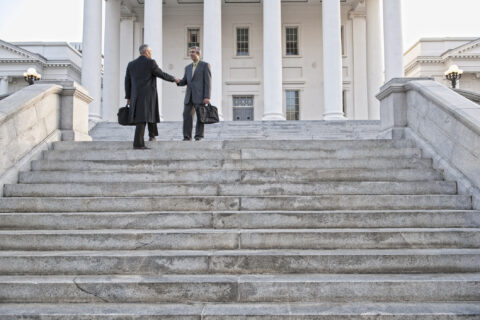In Sackett v. EPA the U.S. Supreme Court will decide the proper test for determining when “wetlands” are “waters of the United States.” This test has long remained unclear because Justice Scalia and Justice Kennedy offered competing definitions in Rapanos v. United States (2006).
The Clean Water Act (CWA) prohibits any person who lacks a permit from discharging pollutants, including rocks and sand, into “navigable waters,” defined as “waters of the United States.”
CWA regulations define “waters of the United States” to include “wetlands” that are “adjacent” to traditional navigable waters and their tributaries.

In Rapanos, Justice Scalia, writing for four Justices, stated that “waters of the United States” extend to “relatively permanent, standing or flowing bodies of water” and to wetlands with a “continuous surface connection” to such permanent waters.
For Justice Kennedy, writing alone, if wetlands have a “significant nexus” to navigable waters they are “waters of the United States.”
According to the Ninth Circuit, while the Scalia plurality did not totally reject the concept of a “significant nexus,” it opined that only wetlands with a “physical connection” to traditional navigable waters are “waters of the United States.”
In this case, the Sackett’s purchased a “soggy residential lot” 300 feet from Idaho’s Priest Lake. To the north of their lot, with a road in between, is a wetland that drains to a tributary that feeds into a creek that flows southwest of the Sacketts’ property and empties into Priest Lake.
After obtaining permits from the county the Sacketts began backfilling the property with sand and gravel to create a stable grade. The U.S. Environmental Protection Agency issued the Sacketts a “formal administrative compliance order” explaining they were violating the CWA. The order also informed the Sacketts that failure to comply could result in penalties of over $40,000 per day.
Before the Ninth Circuit, the Sacketts argued that the Scalia opinion controls whether their property contains wetlands. The Ninth Circuit disagreed.
Per the Supreme Court in Marks v. United States (1977) if there are not five votes to support one rationale of a Supreme Court case the holding of the case is “the narrowest ground to which a majority of the Justices would assent if forced to choose in almost all cases.” According to the Ninth Circuit the Kennedy concurrence supplied the controlling rule in Rapanos because if forced to the four dissenting Justices would have joined Kennedy’s opinion rather than Scalia’s.
In their petition asking the Court to hear this case the Sacketts argued that the Court should reject Justice Kennedy’s “significant nexus test” because it is “incredibly challenging to figure out what the significant nexus test actually requires.” As a result, “virtually any wet area” in the Ninth Circuit is “at least presumptively” considered “waters of the United States,” according to the Sacketts.
United States argued in its amicus brief asking the Court not to take this case and that the problem with Justice Scalia’s definition of wetlands is that the federal government “would lack authority to protect wetlands separated from a navigable river by a small dune or other natural barrier, even if overwhelming scientific evidence showed that the wetlands significantly affect the river’s ‘chemical, physical, and biological integrity.’”
Federal agencies have tried numerous times since Rapanos to clarify the definition of “waters of the United States,” not yet successfully. With the Trump Administration’s Navigable Waters Rule vacated by the court, EPA is once again undergoing a rulemaking to clarify which waters are federally protected under the CWA and are seeking comments on a proposed rule to put back into place the pre-2015 definition, updated to reflect consideration of U.S. Supreme Court decisions. Comments can be submitted through the Federal Register by Feb. 7.
Let NLC deliver for you!
The National League of Cities (NLC) is your partner in recovery. This is the time for America to do more than survive; we can thrive.
NLC is a strategic partner for local leaders and municipal staff, serving as a resource and advocate for communities large and small. Click the button to learn how NLC can help deliver for your city.







